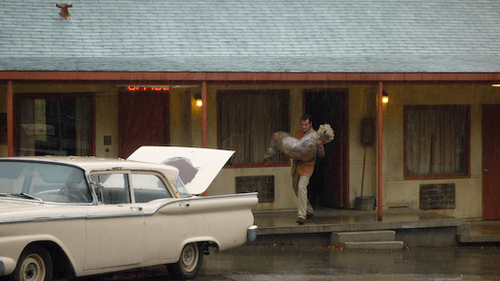'Psycho's' better half
Reconsidering Janet Leigh in Alfred Hitchcock's 'Psycho'

The new year began with a treat for movie fans, a dozen of Alfred Hitchcock’s best in a 24-hour marathon on Turner Classic Movies. Psycho in particular repeats at 8 p.m. Wed., Jan. 11 as part of a TCM theme: Connections to artist Edward Hopper. In this case, the connection is the iconic Bates house.
Does anyone besides me watch this movie every chance they get? Hitchcock’s most famous (though not best) film remains a puzzling entry in his amazingly consistent oeuvre. Once the shock effects are absorbed, by a third or fourth viewing, it becomes clear the better movie is its first half, before the shocks begin.
A woman worth watching
Many see this 1960 classic once and never become more familiar with it. But its first half, the lesser-known part, is a John O’Hara-style story, with clear, conflicted characters whom we recognize, and whose personalities and predicaments Hitchcock evokes masterfully with his confined sets, focused dialogue and subtle props. Credit too, to Philadelphia-born-and-bred scriptwriter Joseph Stefano, who improved on Robert Bloch’s source novel.
Janet Leigh is great in her opening scene, the hotel-room tryst with boyfriend John Gavin that she swears will be their last. She’s great back in the office in her cool toleration of a rich customer showboating the fateful $40,000 in cash, not to mention the rest of his wealth, some of which he would love to spend on Leigh if she would give him the least tumble. She won’t; she just told Gavin she would live with him in the backroom of his hardware store even without income, gladly, if only they would marry and give her respectability.
However, maybe it would be different if someone just handed her the money.
Psycho repays multiple viewings. There are so many touches we miss the first few times, or that may register, but only subconsciously. A wide-angle photo of a desert scene hangs above Leigh’s desk in the Phoenix realty office where she works. Life and adventure are right there for the taking, it says, its broad vista contrasting painfully with the characters below it living cramped lives in cramped rooms.
Inside out
Another motif: we see a lot of mirrors in the first half. Reflections in these mirrors and in the windows of Leigh’s car multiply the figures and reinforce the claustrophobic atmosphere. Their reflections say these characters cannot escape the problems they are hiding; their images reveal them. In at least one scene, we can see more of Leigh’s facial reaction to Anthony Perkins in the mirror than by watching her directly. Those reflections will disappear, but the actions they showed cannot be erased.
A favorite Hitchcock shot is a window and a mirror — the car driver’s rear-view mirror, in which the receding past is clearly visible in the tight focus, while the future approaches, flowing all around it through the front windshield. The ordinary pleasures of life are right out there, Hitchcock loves to show, but the irony is they are usually just out of reach of his characters, as their problematic circumstances begin to close around them.
“I’m looking for a private island,” says the most tormented character in this iconic movie.

“I think we’re all in our private traps. Clamped in them. And none of us can ever get out,” answers the second-most-tormented character, Norman Bates. Private, but forced to live in public. Freedom and its impossibility drive Psycho long after the surprise of its twists, the parts every viewer remembers, has faded.
The sequel that might have been
Hitchcock’s love of suspense makes it easy to forget how larger themes make his best movies memorable. Consider Shadow of a Doubt, Vertigo, stories of unusual human relationships we remember better than their plots. It is the biggest difference between Hitchcock movies, which festoon every Best-100 list, and all the run-of-the-mill genre pictures by lesser directors.
Would Leigh really have gone back, as she told Norman during their tête-a-tête? Would she return the $40,000 and attempt to undo her brief fling as an outlaw? What would she have done if she were then fired from her job? And what would boyfriend Gavin’s ultimate reaction have been? There are three or four Psycho sequels focused on Norman Bates, but it is the Janet Leigh movie never made that I wish we could see. In most cases, Hitchcock’s storytelling artistry and his entertainer’s flair mesh well. This time, dispatching his heroine at 50 minutes prevented that from occurring, and this is one time Hitchcock’s artistry produced a more interesting movie than his suspense manipulations. That better half is still tantalizing 57 years later.
What, When, Where
Psycho. Alfred Hitchcock directed. Jan. 11, 2017 at 8 pm on Turner Classic Movies. Also available on DVD from Viva Video, 16 W. Lancaster Avenue, Ardmore, Pa. (610) 649-8482.
Sign up for our newsletter
All of the week's new articles, all in one place. Sign up for the free weekly BSR newsletters, and don't miss a conversation.
